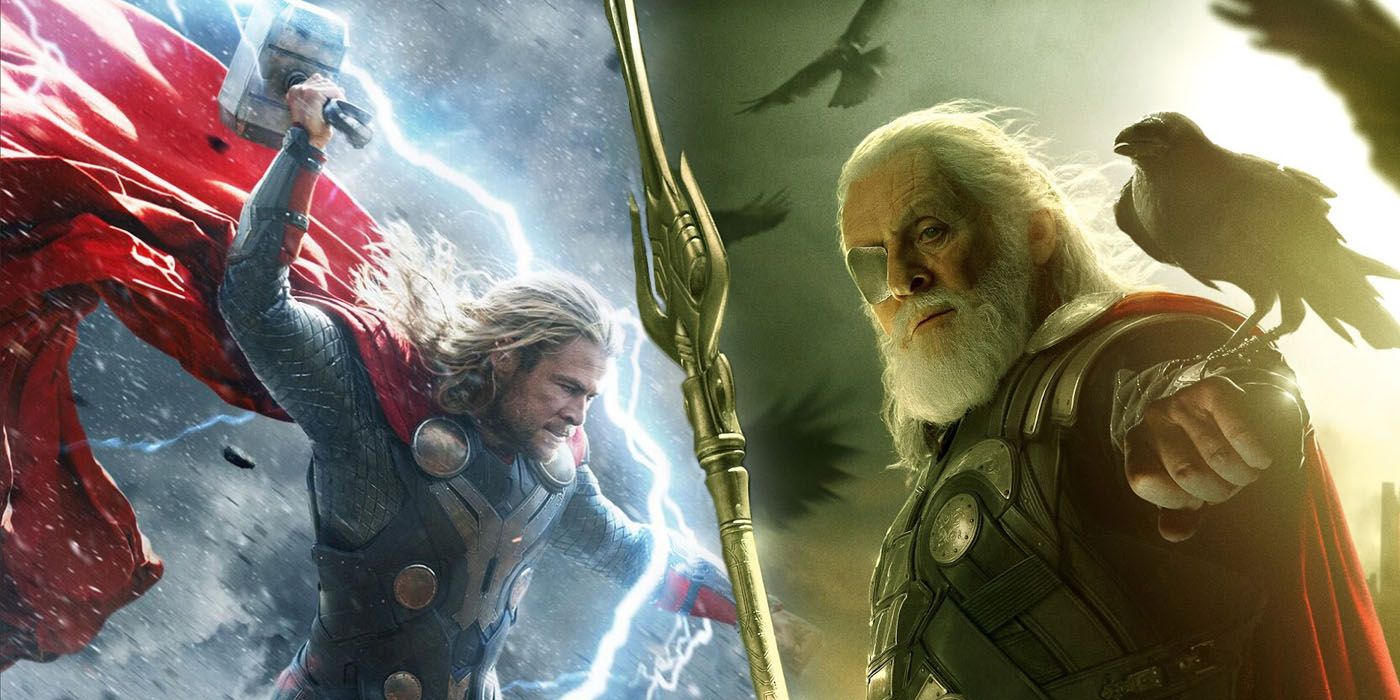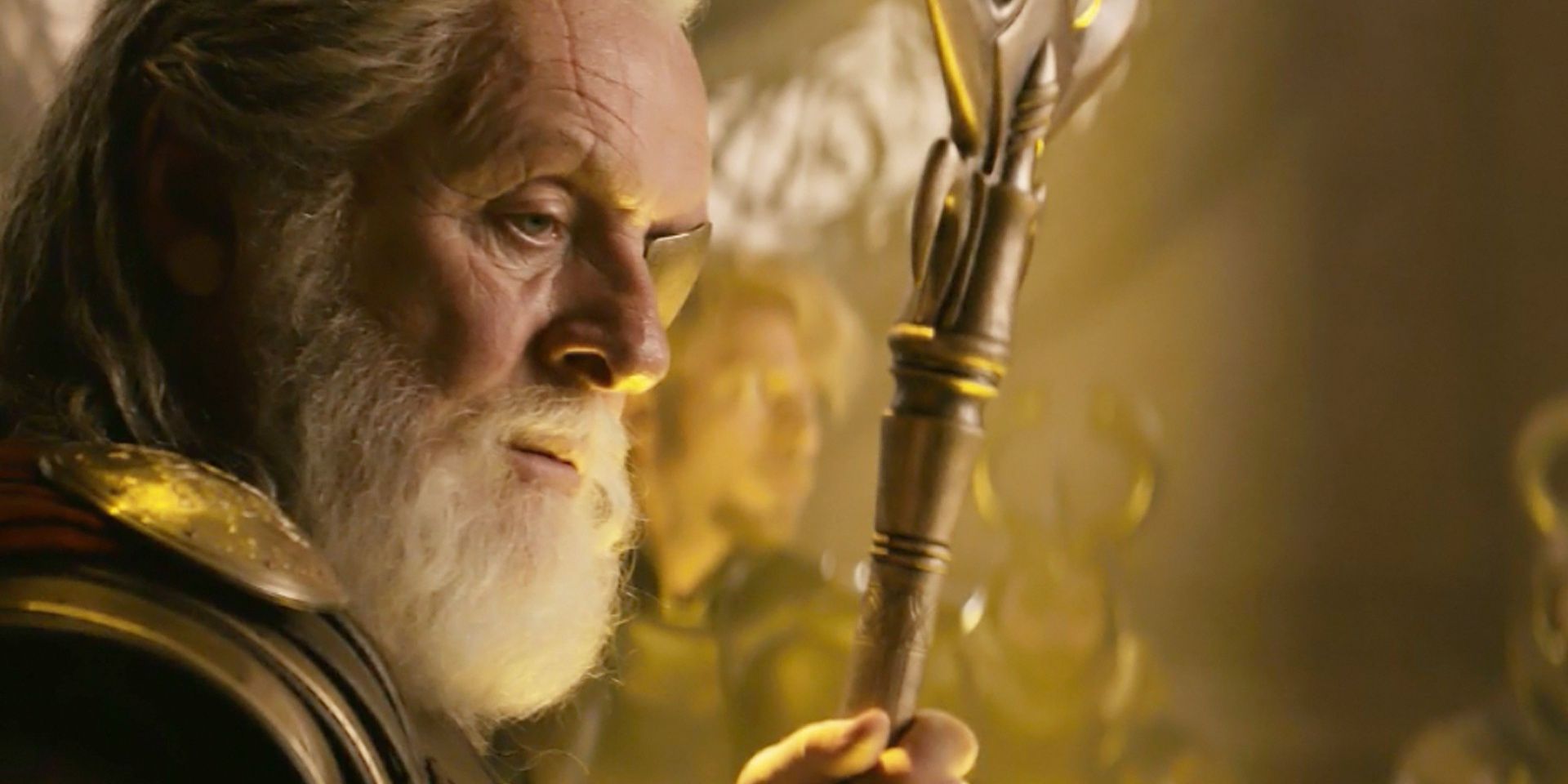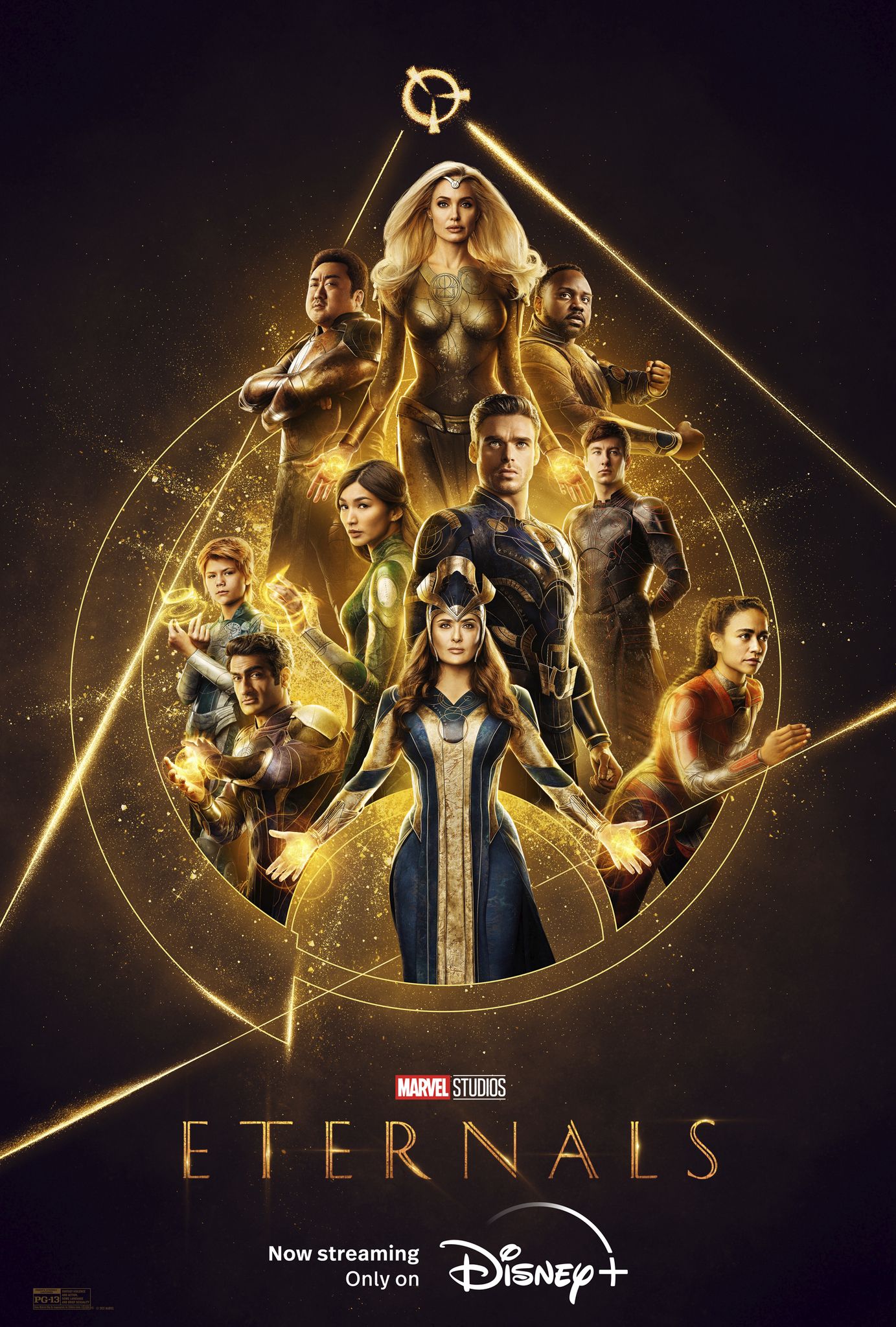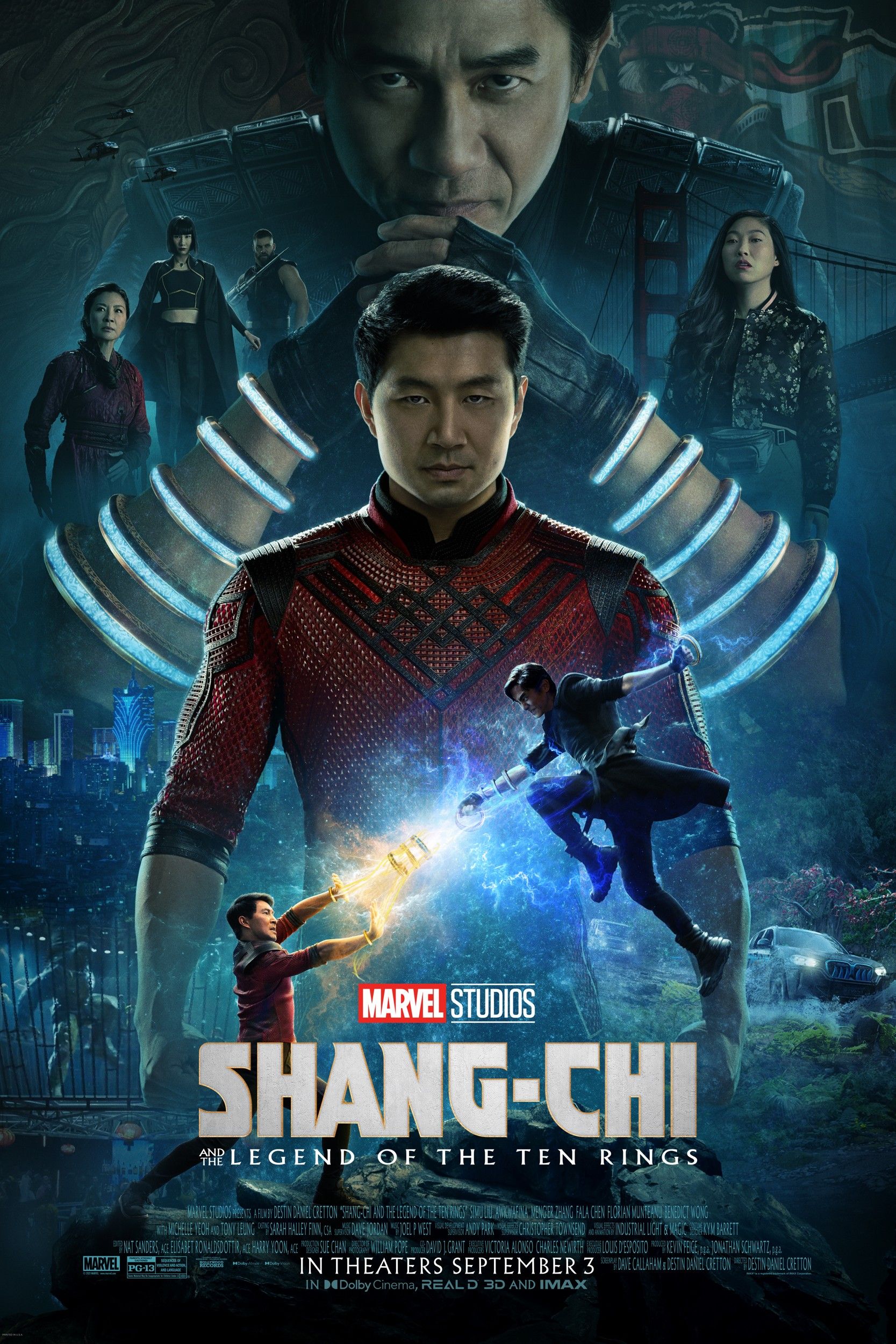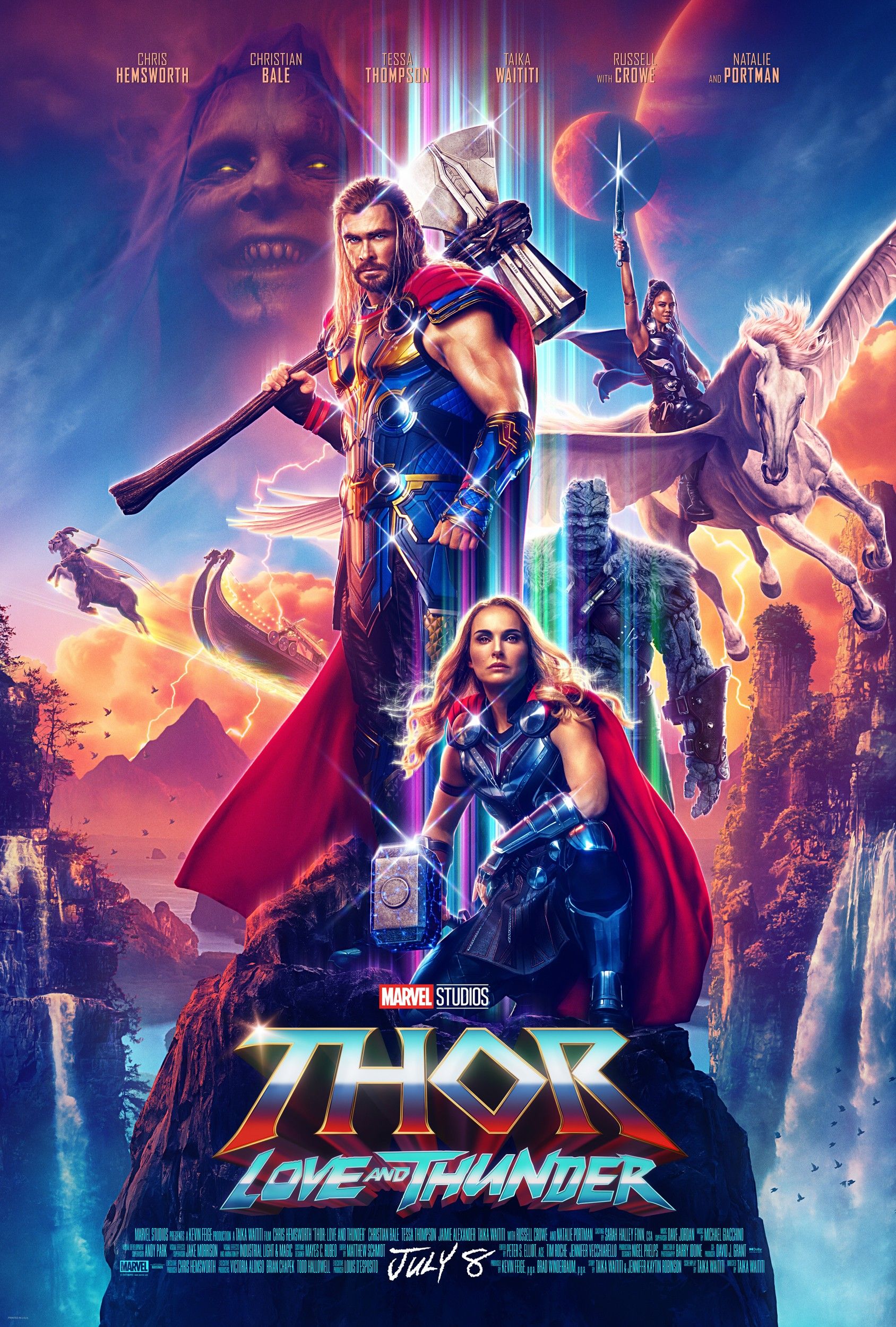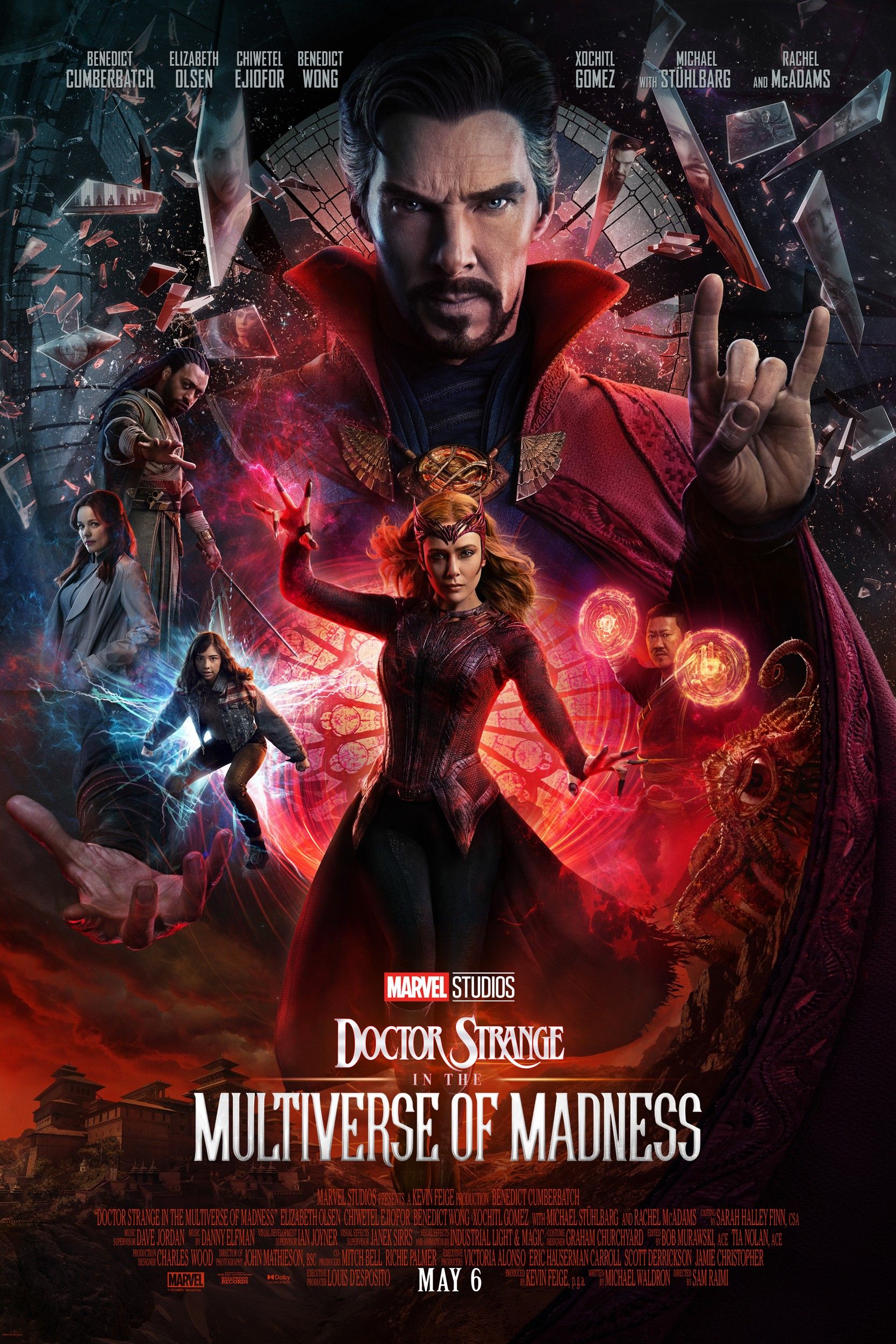Both Mjolnir and Stormbreaker have been major plot points for Thor in the MCU, but his father, Odin, had a spear known as Gungnir that rivaled the hammers in power. Thor and his family, as they appear in the Marvel films, are versions of Norse gods reinvented as an alien race. Much like the myths they're based on, the Asgardian warriors are outfitted with a fantastical armory, the greatest pieces of which are reserved for Odin and Thor.
The amount of action that each of the three items sees in the films varies greatly, making a comparison between them somewhat difficult. For instance Mjolnir was halted by the vibranium of Captain America's shield, which neither Stormbreaker nor Gungnir faced, and Gungnir's use in extended combat was very limited. That said, some of their less-obvious similarities, supplemented by comics and mythology, can provide a clearer picture of their relative qualities.
Gungnir's first appearance in Thor establishes the power of the cinematic version. Like Mjolnir and Stormbreaker, the spear is composed of the mystical Asgardian metal known as Uru. Unlike the two hammers, which were crafted by dwarfs, both the comics and the films depict Gungnir as old beyond reckoning, having no clear origin but possessing some unique qualities, even among Odin's large collection of relics. In addition to being a formidable martial weapon with magical properties, it also gave the wielder control over the Destroyer Automaton, which Loki is seen siccing on Thor in the first film, so the considerable strength of that construct has to be considered when measuring the worth of the spear. As a counterpoint to this added lore, though, the MCU completely omits Gungnir's origins as told by Norse myth - namely, that it too was forged by dwarfs before being retrieved for Odin by Loki as a means of atoning for some of his many hijinks. This lack of explanation gives the spear an element of authoritative mystery that befits Anthony Hopkins' enigmatic portrayal of Odin, but it also makes its power harder to comprehend.
Regardless of origin, all three of these Asgardian weapons share a magical property that makes them reflect the nature of their wielder. A key plot point in Thor: Ragnarok emphasizes that Mjolnir served as a conduit for Thor's power. Although it is not mentioned in the films, the comics noted that Gungnir similarly acted as a focus for the "Odinforce," the innate energy Odin emanated as ruler of Asgard.
In considering the relationship between these weapons and their users, it's worth noting that, while Thor, Loki, and Odin have all brandished Gungnir, and Hela claimed Mjolnir before Thor (and eventually destroyed it), Stormbreaker was explicitly crafted for Thor's use alone, specifically to be used against the incredibly powerful Infinity Gauntlet. Even without the worthiness requirement of Mjolnir, this lofty goal attests to its inherent value when combined with Thor's abilities. In keeping with this bespoke nature, it is also not based on a mythical inspiration like the other two, meaning that Marvel has an even greater freedom to define its power, as was made clear by its cosmic significance in Avengers: Infinity War and Avengers: Endgame.
On a very basic level, the simple fact that Stormbreaker is the last surviving of the three is suggestive of its superiority. But perhaps the most convincing argument in its favor can be seen in the characters' attitudes toward the weapons. While Mjolnir and Stormbreaker are shown great reverence, Gungnir, after being only briefly used by Thor in a skirmish against Hela, is left on Asgard when the realm is destroyed. So even if the spear harbored tremendous power, it went unappreciated by Thor and Loki - the relic of a bygone age, forgotten as its heirs sought to carve out their own path with their own tools.

